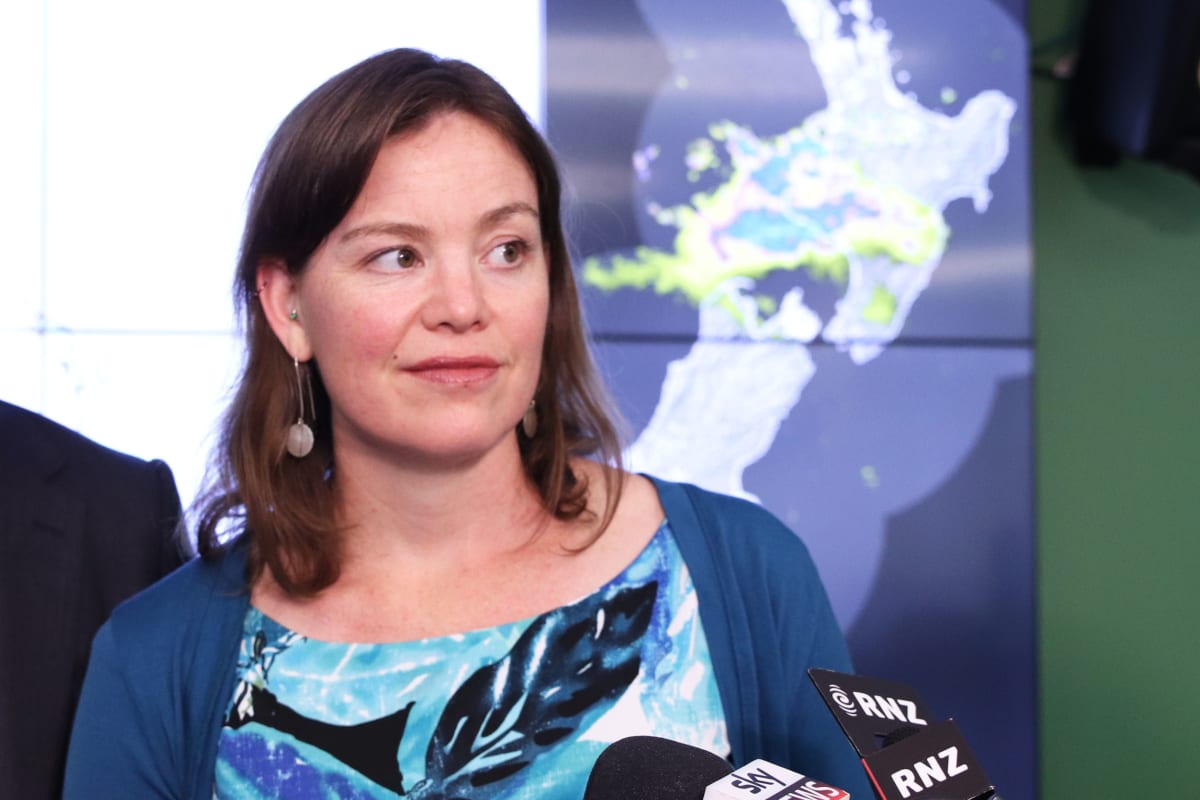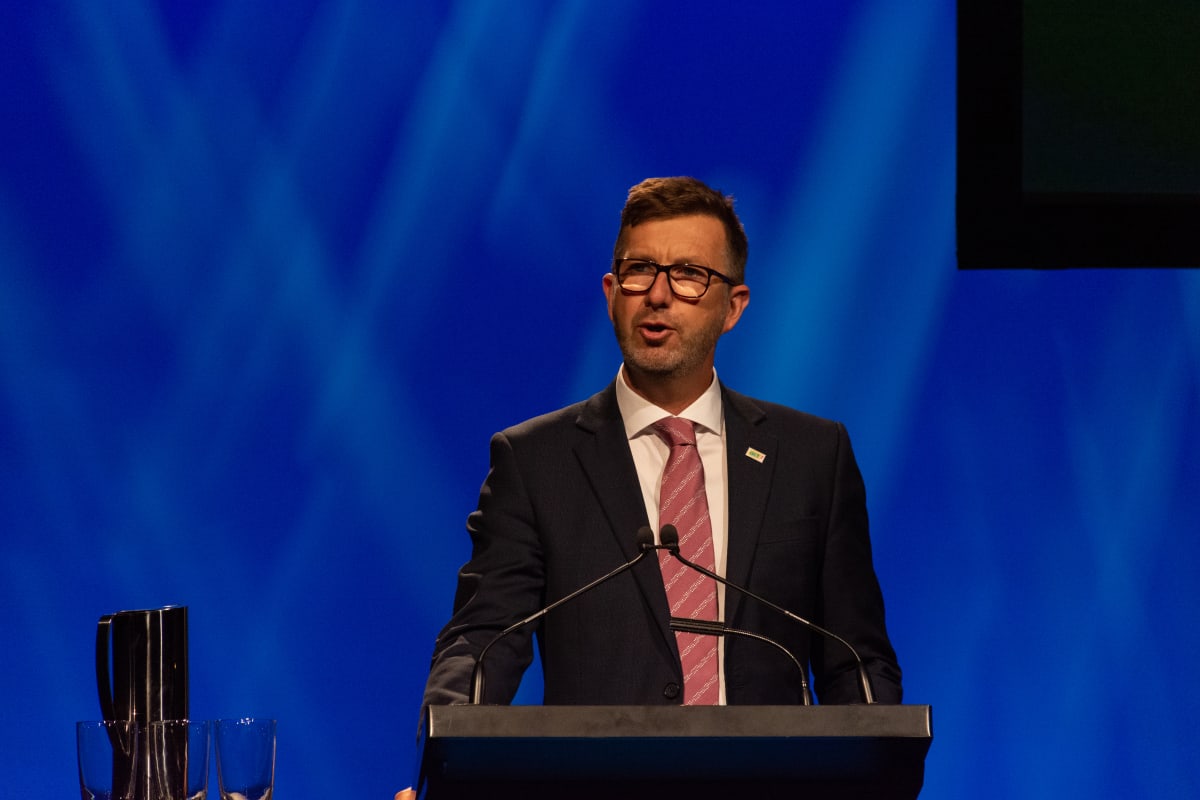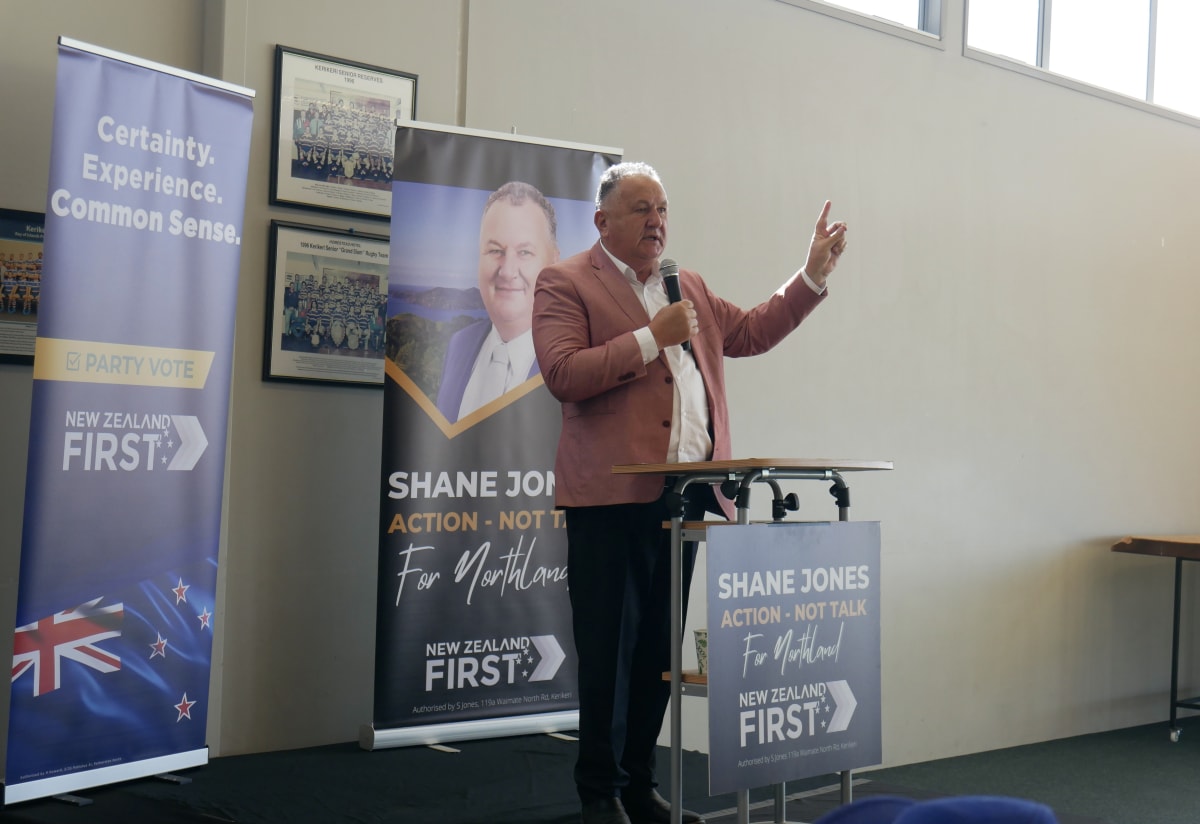
How will each party approach New Zealand’s chronic infrastructure underinvestment?
The state of New Zealand’s infrastructure has come under a harsh spotlight in recent times.
Perhaps the recent reassessment of all the pieces that allow the country to function can be traced back to August 2016, when an outbreak of gastroenteritis in Havelock North was found to have been issues with the drinking water supply.
READ MORE:
* Defining Issues: What is the youth crime problem we're trying to solve?
* For whom the road tolls: National digs through the funding toolbox
More than 5000 people fell ill after heavy rain caused livestock effluent to overflow into an aquifer feeding Brookvale bore.
Those were the findings of a quickly called inquiry after what was described as the largest waterborne contamination event in New Zealand history.
It also set the political agenda for the next six years. The Three Waters reform programme was spearheaded as a promised solution to drinking water, stormwater and wastewater inadequacies.
And once the co-governance question in the programme came to the fore and made Three Waters the political hot potato du jour, people were talking about the country’s water services more than ever before.
Then came 2023, and the barrage of severe weather that ended the summer and put strain on systems that experts and politicians alike were already calling underfunded and not fit-for-purpose.
The Auckland Anniversary Floods and Cyclone Gabrielle put stormwater at the centre of public discourse, and all of a sudden concepts like ‘sponge cities’ were appearing daily in the media.
Suffice to say, infrastructure and weather resilience have become defining issues of this year’s election.
The major parties all seem to agree on a few major points: the country’s infrastructure is suffering from decades of underinvestment, and there are more severe weather events on the way to put it to the test.
Where they differ is on what New Zealand’s next steps should be.
Newsroom has explored the policies on offer by each of the major parties to find out just what Kiwis will be voting for this year when it comes to infrastructure.
Labour
Although it has been widely agreed among the major parties that something needs to be done about the country’s ailing infrastructure, the party leading the incumbent government’s line is that they are already part of the solution.
Labour has spent $45 billion on infrastructure over the past five years and put $3.6b aside for the Climate Emergency Response Fund.

Its campaign has promised to extend that even further, committing $71b over the next five years into infrastructure, schools, hospitals and public housing.
Finance Minister Grant Robertson called this “the long-term nation-building a responsible government must do” when he announced it at Budget 2023.
However, the country’s infrastructure deficit has been valued at $210b by Treasury – an ocean-sized gulf that will take more than five years to fix.
It would be more like 15 years if Labour’s promised pace continues.
The crown jewels of Labour’s infrastructure plan are a list of 14 transport projects, along with continuity for projects in a state of existential uncertainty like Auckland’s light rail.
Roads like State Highway One from Auckland to Whangārei and from Cambridge to Piarere are on the list, as well as a second Mount Victoria Tunnel and rapid transit lines to Auckland’s rapidly developing northwest.
National
National wants to put more of a focus on private-public partnerships and give local government more of a say in what projects get the go ahead.
National’s infrastructure spokesperson Chris Bishop has talked about a National Infrastructure Agency which would coordinate government funding to connect investors with infrastructure projects.

The idea is overseas capital would be used to fund the big roading and transport projects, and then tools like congestion charging, toll roads and value capture would be used to pay for it.
Christopher Luxon has described the solution as “getting the economics right and having regulation that is fit for purpose” – what that means is a fast-tracking to the consents process, modelled on fast-tracking used under Covid-19.
Meanwhile, National would require councils to immediately consent enough land capacity for 30 years’ worth of housing growth.
Bishop has said the future of cities needs to include “growing at the border and intensifying in the centre”. However, the party’s u-turn on its own bipartisan agreement with Labour in 2020 on housing intensification muddies the waters a little on exactly how much intensification would be allowed under National.
When it comes to transport, National has revived the roads of national significance programme, which faded out after the 2017 election took them out of power, while Auckland’s light rail would be on the chopping block.
Greens
The Green Party’s approach to infrastructure focuses on equitable public transport and climate adaptation.
The Greens would steer city plans towards walkability, providing green space, mixed-use zoning, active transport corridors and climate resilience.

They’ve been critical of Labour and National’s road-heavy transport plans.
Greens transport and infrastructure spokesperson Julie Anne Genter said funnelling billions into more roads shows a lack of seriousness about climate change.
“We’re pleased to see some rail, and recognition of necessary safety improvements but the focus is still too much on new roads, and not low-carbon alternatives,” she said in reaction to the unveiling of Labour’s transport plan.
Instead, the Greens would focus on getting public transport projects to the finish line, making some changes like bringing Auckland’s light rail to the surface.
Before an Infrastructure New Zealand audience, co-leader James Shaw said he could build surface-level light rail in Auckland, Wellington and Christchurch for the cost of the current tunnelled project.
Interestingly, the Greens actually echo National in the latter’s recent interest in value uplift. The Green Party would place a levy on land close to rapid public transport links to reflect the increase in value this new infrastructure would bring.
There’s also been some cross-party consensus on congestion charging.
But Shaw has a warning about putting the cart before the horse when it comes to those kinds of charges: “One of the things that I get worried about is from other political parties with their transport priorities is that they say that they will invest in roads first, and then they will get to the public transport, but we'll be paying congestion charging in order to pay for those roads, and then the public transport happens further down the track. And the problem then is all that is it's just a tax on people who are driving around because they don't have any option.”
In other words, public transport options should best be up and ready to go before congestion charging comes in.
Act
Act infrastructure spokesperson Simon Court said the party would use “private enterprise and local knowledge to get [New Zealand’s] infrastructure up to speed”.
Act would decentralise and privatise elements of New Zealand’s infrastructure delivery by giving local councils tax back to use on the big projects and disconnecting Waka Kotahi and KiwiRail from central government control.

It would also allow capital from “friendly OECD countries” to come and invest, and prioritise a user-pays system for big projects.
“New Zealand can’t be held hostage to central government’s infrastructure whims or the country’s infrastructure will remain frozen in time,” Court said.
Like National, Act would create a Crown agency with the express purpose of tracking down overseas investors and linking them up with infrastructure deliverers here, and use GST-sharing with local councils to incentivise new builds.
Consenting needs would be massively reduced for infrastructure projects, potentially speeding them up but also softening environmental protections in the process.
Court said the financing and funding of infrastructure is the one problem to solve, and it needs to be figured out before housing solutions can be rolled out through tools like the National Policy Statement for Urban Development (NPS-UD).
“All of our solutions are in here,” he told an Infrastructure New Zealand audience, brandishing his policy document. “They include the funding and financing tools that are missing from the colouring-in exercises that David Parker has carried out with his NPS-UD – or Chris [Bishop] claims he's going to make sure every council colours in a map for 30 years of housing supply – none of that matters unless it's got pipes there, unless it's got roads there.”
New Zealand First
New Zealand First’s second-in-command Shane Jones has spoken about the need for an infrastructure bank able to find a private and public mix of funding and remove spending decisions from the “constipated processes of treasury”.
“The Crown is the worst known organism when it comes to procurement,” he said to the Infrastructure New Zealand audience.

Next to that, New Zealand First’s infrastructure policy at present focuses on a range of projects it would vow to deliver.
There’s an aerodrome in Dargaville, a waste to energy plant in Northland to replace the Dome Valley rubbish dump and moving the country’s main port to Northport, where a naval base, a dry dock and rail connection will also be built.
These projects, along with a promise to build a four-lane highway alternative to the currently treacherous State Highway One route through the Brynderwyns, are mostly focused on Northlanders.
This tracks with a party that’s spent a good amount of the campaign focusing on areas north of Auckland. Jones himself is running for the seat and if the party doesn’t break the 5 percent threshold, that’ll be his only way back to Wellington after a season out in the cold.
The current list of projects is well-curated for a political machine trying to get as many votes as it can out of the country’s northernmost climes.
New Zealand First would also commit to keeping the Tiwai Point Aluminium Smelter open for at least 20 years, and ensure infrastructure construction uses the plant rather than buying “junk aluminium” coming from offshore.
Te Pāti Māori
Te Pāti Māori’s infrastructure policy has two main focuses – housing and water.
If it finds itself in a position to bring some decisions to the negotiating table, co-leaders Rawiri Waititi and Debbie Ngarewa-Packer would look to enshrine Māori custody over natural resources like the water supply and spur public housing development.

The party would ensure 50 percent of all new social housing went to Māori, along with building 2000 new houses on ancestral lands within the next two years at a cost of $600 million.
The Māori-focused developments aim to re-establish the marae-based communities destroyed by urbanisation during the 1950s and 1960s.
The Opportunities Party
TOP would develop a 30-year National Infrastructure Plan with a generation-long pipeline of projects.
It’s a plan presumably funded in part by a land value tax, which would replace GST on rates.

The party also promises long-term arrangements between Crown infrastructure partners and commercial partners, with a focus on long-term contracts to ensure workforce certainty and lessen the risk of projects changing on the fly.
The policy also promises to set GDP targets to use infrastructure funding as a way to lessen the turbulence of the economic cycle. This has been done in other countries by ensuring government spending occurs at times when consumer spending is down, smoothing out the peaks and troughs between different economic conditions.







